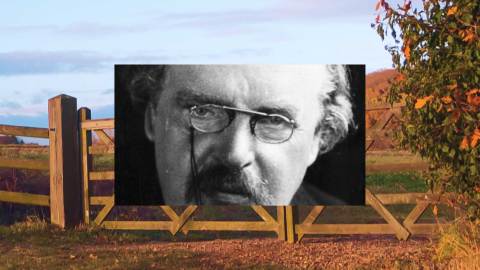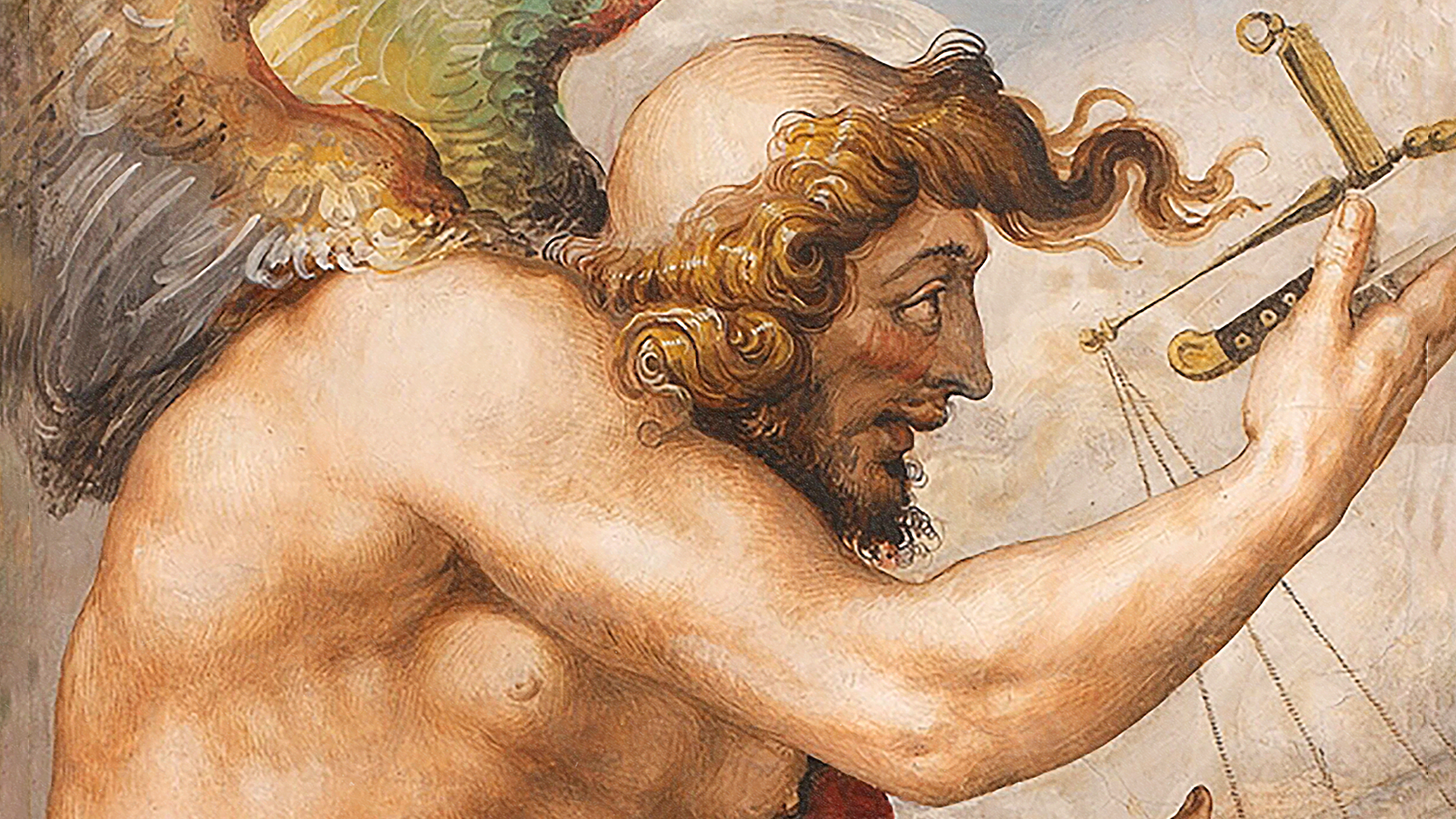How “Chesterton’s Fence” can help you avoid terrible decisions

- Chesterton’s Fence is the idea that if you don’t know what something does, think very carefully before you decide to axe it.
- With roots in government reform, Chesterton’s Fence can be applied to everyday life and business.
- When Jeff Bezos made a distinction between Type 1 and Type 2 decisions, the importance of Chesterton’s Fence loomed large.
Robert is a public-spirited, meddling, busy body. He means well, but when “Good Ol’ Bob” gets involved, he invariably louses it up. Let’s say Robert goes out on a walk in the countryside. It’s a popular walk with postcard views and picnic spots. There is barely a bug or beast to bother you. Halfway through this walk, and blocking the path, is a fence. The fence is tiny and made of damp, rotting wood. It’s easy to step over, but a bit of a nuisance. So Robert has a noble idea: Let’s get rid of the fence. It’s too small to be useful. It’s too rotten to be important. Let’s hack and bash at it so ramblers can enjoy an unimpeded walk.
Within two months, all the cows in the local area are dead — 50 cows killed by Good Ol’ Bob. Two things did it for them. The first was that the tiny, rotten fence was keeping the sheep in their sheep field from the cows in their cow field. Sheep will eat grass right to the ground. They cut it short and low. Cows, though, need long grass to eat with their prehensile tongues. So, malnourished and hungry, the cows were ill prepared for their second plague: badgers. Badgers can carry tuberculosis, and when they come close to cows, they often infect their bovine neighbors. The cows didn’t stand a chance. Robert, with his well-intentioned act of fence vandalism, brought famine and pestilence to the farm.
There’s a concept that embraces this kind of misguided action: Chesterton’s Fence. It’s one of the most important ideas any manager can bear in mind.
The curse of the over-zealous reformer
In his book, The Thing: Why I Am a Catholic, English critic and philosopher G.K. Chesterton introduces us (using a fence metaphor not unlike the one we imagined for Bob) to the idea of the “modern reformer” who blunders in, however well intentioned, and seeks to get rid of the seemingly redundant and the seemingly useless. The problem is that, as with Good Ol’ Bob, many established and traditional institutions exist for some reason. Until you know what a thing does and until you can be absolutely sure you can live without it, you should leave it be. Instead, we ought to mimic “the more intelligent type of reformer [who] will do well to say: ‘If you don’t see the use of it, I certainly won’t let you clear it away. Go away and think. Then, when you can come back and tell me that you do see the use of it, I may allow you to destroy it.’”
Democracies are often criticized for being slow and gradual in their reform. They take too long to deliberate, at too much cost, and the end action is almost always a compromise and easily reversible. For the statesman and philosopher Edmund Burke, this is exactly the strength of democracies. Revolutions and “modern reformers” will “[by] rage and phrenzy [sic] pull down more in half an hour than prudence, deliberation, and foresight can build up in a hundred years.” For Burke, any government needs to change. Reform needs to happen. But the sudden, irreversible, knee-jerk kind of reform is often dangerous. You cannot glue a guillotined head back on.
How Chesterton’s Fence can work for you
Chesterton’s Fence applies to everyday things, too. A driver who jumps a “pointless” stop sign ends up in the ER. A DIY builder knocks down a wall, and instead of “open plan,” he gets “open roof.” But it’s also important in the corporate world. Here we look at three examples.
Stop the elves from leaving Middle Earth. The U.S. entrepreneur Steve Blank gave a great example of Chesterton Fence’s in action. Imagine that a successful startup is growing, and so they hire a Chief Financial Officer to get their ducks in a row. The new CFO, keen to show intent, finds some cuts to make and costs to save. And so they get rid of the free soda and snacks in the office. It’s a job well done. That’s $10,000 saved. But suddenly, the company feels very different. The employees who made the startup successful start to mutter and gripe. “Things are too corporate now,” they say, and “it’s not like it was.” So, an exodus happens. They leave for greener pastures. They leave the cost-cutting ship. They miss their free soda.
Distinguish Type 1 from Type 2 decisions. In a 2015 letter to shareholders, Jeff Bezos introduced us to the idea of “Type 1” and “Type 2” decisions. Type 1 decisions “are consequential and irreversible or nearly irreversible — one-way doors.” They are the knocking down of a fence, driving through a stop sign, or knocking down a wall. Bezos says we must move “carefully, slowly, with great deliberation and consultation” for these. Type 2, on the other hand, are decisions that are reversible, fixable, and allow you to come back from them. When you’re making any decision at a management level or in your day-to-day working life, ask yourself if it’s a Type 1 or Type 2. If it’s Type 1, then bring in more people. Slow down. Look at the problem and decision from every possible angle. Consider Chesterton’s Fence.
Revise your hypotheses. In an interview for Big Think+, investor and author Roger McNamee talks us through how to fix your mistakes. Sometimes, you will steamroll over Chesterton’s Fence. You’ll make a Type 1 decision that is rash, impulsive, and stupid. McNamee teaches us that the important thing is to “always update your hypotheses as you’re going along.” Learn from the mistake. Why didn’t you see the importance of Chesterton’s Fence? What biases and presumptions do you have about your company that let it happen? Perhaps you need to revise how you see the business. Perhaps it doesn’t work how you assumed it did.




